Mar
31
2023
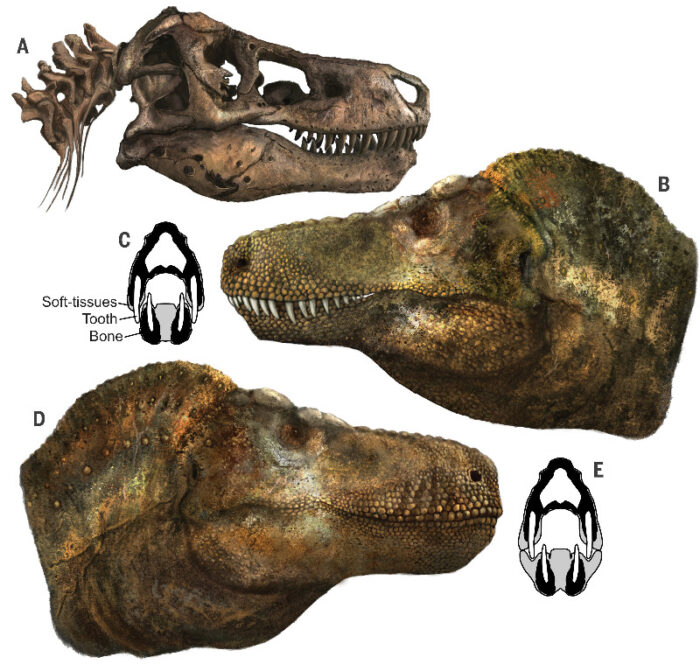 One of the challenges of paleontology is that we are trying to infer and entire animal just from the hard parts that fossilize, mostly bones and teeth (and sometimes just teeth). But if we look at animals today there are a lot of details we could not guess from their bones alone – the mane of a lion, the humps on camels, or the amazing display of peacocks. Soft tissue is rarely preserved, so in many cases we simply have to guess. If we look at the classic depictions of dinosaurs, we see creatures that are all drab in color and don’t have any significant soft-tissue adaptations. We are getting better and inferring color from fossilized melanosomes. We are also discovering that many dinosaurs had feathers, and those feathers were probably colorful. In fact, that clade (just think of birds) have lots of integumentary adaptations, not just feathers. Turkeys are a good example. It’s just as likely, therefore, that dinosaurs had lots of interesting integumentary structures hanging off of them.
One of the challenges of paleontology is that we are trying to infer and entire animal just from the hard parts that fossilize, mostly bones and teeth (and sometimes just teeth). But if we look at animals today there are a lot of details we could not guess from their bones alone – the mane of a lion, the humps on camels, or the amazing display of peacocks. Soft tissue is rarely preserved, so in many cases we simply have to guess. If we look at the classic depictions of dinosaurs, we see creatures that are all drab in color and don’t have any significant soft-tissue adaptations. We are getting better and inferring color from fossilized melanosomes. We are also discovering that many dinosaurs had feathers, and those feathers were probably colorful. In fact, that clade (just think of birds) have lots of integumentary adaptations, not just feathers. Turkeys are a good example. It’s just as likely, therefore, that dinosaurs had lots of interesting integumentary structures hanging off of them.
A recent study highlights one method that scientists can use to gain more information about the soft tissue of dinosaurs. They looked at the teeth of T. rex, crocodilians, and lizards. Their question was – did T. rex have a toothy smile like an alligator, or fleshy lips covering their teeth like lizards? They have been imagined both ways, but Jurassic Park probably solidified the image for many people of a toothy T. rex. There is definitely something more menacing about a grill of visible deadly carnivore teeth.
What they did was look at the teeth, which is the hardest part of vertebrates and fossilize very well. Specifically they looked at the wear on the teeth. If fleshy lips covered the teeth, they would have been protected from wear along the covered surface. When looking at the teeth of crocodilians vs lizards we see this difference. So all we have to do is examine T-rex teeth to see if they have wear patterns that look like a crocodiles or a lizards. They also did an analysis of skull size and tooth length to see if there was also a relationship there. They found:
Contrary to depictions that have dominated for more than a century, they found that theropods, including T. rex, had lips that covered their teeth, leaving them looking more like modern Komodo dragons than crocodiles.
Continue Reading »
Mar
30
2023
 It is an unfortunate reality that with over 8 billion people on the planet almost anything we collectively do has the potential to have huge environmental impacts. When the human population was in the mere millions we could treat the planet as an essentially unlimited resource. But we simply don’t have that luxury anymore. Most arable land is already used for farming, for example. Our plastic waste is clogging the oceans and finds it way to even remote environments. And the CO2 our activities release into the carbon cycle is literally changing the climate.
It is an unfortunate reality that with over 8 billion people on the planet almost anything we collectively do has the potential to have huge environmental impacts. When the human population was in the mere millions we could treat the planet as an essentially unlimited resource. But we simply don’t have that luxury anymore. Most arable land is already used for farming, for example. Our plastic waste is clogging the oceans and finds it way to even remote environments. And the CO2 our activities release into the carbon cycle is literally changing the climate.
Sometimes, even when we try to do the right thing, it can have unintended negative consequences. Right now we are engaged in a fairly rapid turnover of our energy and transportation infrastructures away from fossil fuels. Many argue it’s not fast enough, but we cannot assume the alternatives have not environmental impact. Again – anything we do is big. The rare earth metals we need to make batteries, solar panels, and electronic equipment is mined through a toxic process that has negative environmental externalities. If we are going to make billions of electric cars and add massive battery grid storage, lots of solar panels and wind turbines, then we need to dramatically increase this toxic mining, or find alternatives.
For our EV (electric vehicle) revolution the current metals that are the most in demand and resource limited are lithium, cobalt, nickel, copper, and rare earths. Solar relies heavily on copper and aluminum, wind power on copper, zinc, and rare earths (but see the linked chart for more details). We need to develop our land-based mining of these metals if we want to continue cranking our EVs, while also looking for alternatives. There are essentially three types of options to maintain the growth and sustainability of EVs.
One option is to develop new battery technology that does not rely on these metals. This is why there is a lot of effort to develop batteries based on chemistry that does not involve resource-limited material. We need an effective battery made from cheap abundant and non-toxic materials. Much of the current focus is on aluminum, sulfur, and rock salt. Even if we developed a battery that did not have good energy density and could not be used in cars, it could still be suitable for grid storage where size is less of an issue. Then at least grid storage would not compete with car batteries.
Continue Reading »
Mar
27
2023
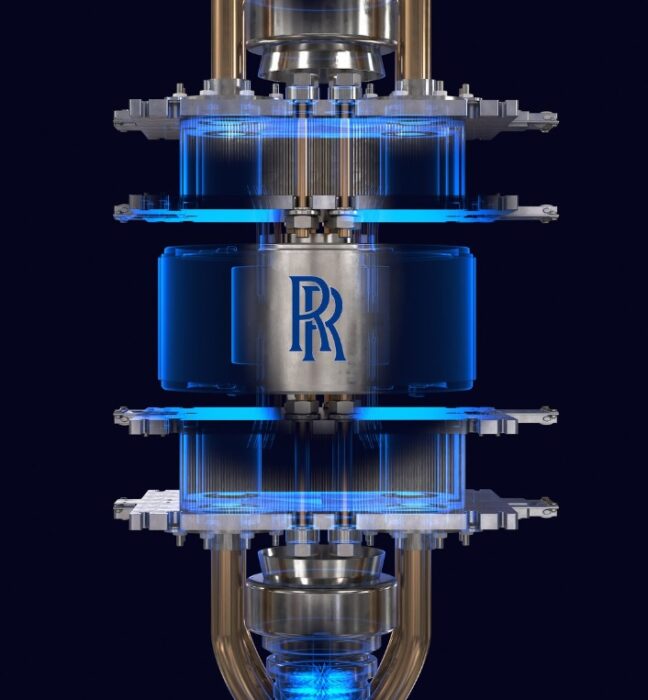 The first nuclear powered vessel was completed in 1959. Since then there have been nuclear powered vessels in the oceans, including many nuclear submarines. The obvious advantage is that such vessels can stay at sea for long periods of time without refueling. These ships use what are called nuclear microreactors, those that produce <50 MW of electricity (small modular reactors create 50-300 MW, and large traditional reactors about 1,000 MW).
The first nuclear powered vessel was completed in 1959. Since then there have been nuclear powered vessels in the oceans, including many nuclear submarines. The obvious advantage is that such vessels can stay at sea for long periods of time without refueling. These ships use what are called nuclear microreactors, those that produce <50 MW of electricity (small modular reactors create 50-300 MW, and large traditional reactors about 1,000 MW).
There has been renewed interest in these nuclear microreactors recently as we explore new possible solutions to global warming. Nuclear power is a great option, because it produces a large amount of power in a small footprint and does not product CO2 as a waste product. It also serves as either baseload or increasingly on-demand energy, which makes it more useful than intermittent sources.
But nuclear also has some challenges, namely that it takes a long time to get a new plant up and running, and the initial investment can be very high (in the billions for a traditional reactor). For this reason the nuclear industry is moving in the direction of small modular reactors which are quicker and cheaper to build (although they may lose some of the economy of scale of larger reactors). But we may be able to go beyond small modular reactors and repurpose the microreactors used by naval vessels as power for the grid. Such reactors may also serve as the core of nuclear engines for spaceflight, or be used to power off-world bases and settlements.
Rolls-Royce Holdings (not the car company – that split off decades ago) recently unveiled their designs for its own microreactor. They have been producing nuclear reactors for submarines since the 1960s, so they are an old player in this technology space. Their goal is to do exactly what I said – to repurpose the technology they have been developing for ships to be used for grid energy, and eventually nuclear rockets and power bases on the Moon and Mars. Rolls-Royce is also getting into the small modular reactor business, but that’s a separate story.
Continue Reading »
Mar
24
2023
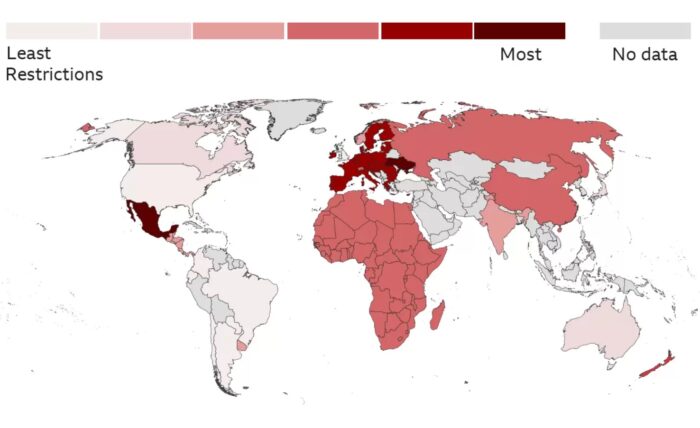 This has been somewhat of a quiet revolution, but a new law in England may bring it to the foreground. The Precision Breeding Act will now allow gene-edited plants to be developed and marketed in England (not Northern Ireland, Wales, or Scotland). The innovation is that the law makes a distinction between genetically modified organisms (GMOs) and gene-edited organisms. This has already happened in the US, with the USDA declaring that gene-editing is not the same as GMO, for regulatory purposes.
This has been somewhat of a quiet revolution, but a new law in England may bring it to the foreground. The Precision Breeding Act will now allow gene-edited plants to be developed and marketed in England (not Northern Ireland, Wales, or Scotland). The innovation is that the law makes a distinction between genetically modified organisms (GMOs) and gene-edited organisms. This has already happened in the US, with the USDA declaring that gene-editing is not the same as GMO, for regulatory purposes.
GMO has always been, in my opinion, a category that is both arbitrary and overly broad. It has referred to any organism (usually a crop) that is the result of genetic engineering using a variety of techniques. This could include silencing a gene, removing a gene, or introducing a new gene either from a related variety (cisgenic) or a distant species (transgenic). Most of the fearmongering (and that’s what it is) around GMOs have been focused on transgenic varieties, but then used to try to ban the entire category. The newer regulations, essentially, limit GMO to transgenic changes, and refer to everything else as gene-edited. This is often described as changes that could theoretically occur with breeding techniques, now just faster.
This is all good, because it restricts the damage done by anti-GMO fearmongering. It’s still wrong, it’s just not casting as wide a net. To show how arbitrary this all is, most restrictions on GMOs make exceptions for cheese made with enzymes that are the product of engineered yeast. Why? Because the cheese industry would collapse without it. Similarly, Hawaii, which is ideologically very anti-GMO, made an exception for GMO papaya. Why? You guessed it – because without it they would have lost their papaya industry.
Continue Reading »
Mar
23
2023
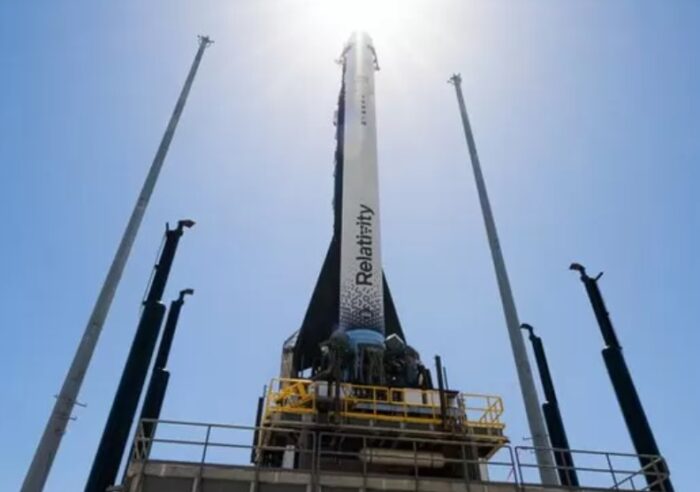 This is one of those technology news stories where the implications of the technology is greater than the thing itself. Relativity Space, a rocket company based in California, launched their first Terran-1 rocket. The launch ultimately failed when the second stage failed to ignite, but that does not really matter. This is a small rocket with a modest payload of 1.25 tons, but that does not really matter either. This rocket system is reusable, but that’s old news. This particular launch is newsworthy because 85% of it was made with additive manufacturing – 3D printing.
This is one of those technology news stories where the implications of the technology is greater than the thing itself. Relativity Space, a rocket company based in California, launched their first Terran-1 rocket. The launch ultimately failed when the second stage failed to ignite, but that does not really matter. This is a small rocket with a modest payload of 1.25 tons, but that does not really matter either. This rocket system is reusable, but that’s old news. This particular launch is newsworthy because 85% of it was made with additive manufacturing – 3D printing.
The company has built its own industrial-sized 3D printers that can fuse aluminum powder or beads into specific shapes. The advantage of this approach is already well-established. 3D printing allows for rapid prototyping and iteration, because it represents a direct connection between the software and the final product, rather than having to be tooled by specific equipment. It can allow for the creation of more complex shapes into a single component. 3D printing is already being used in the aerospace industry, and Space X uses it to make many parts for its capsules and engines. But 85% is a new benchmark. Relativity space believes it can get the figure up to 95%.
The parts that cannot be 3D printed are things like computer chips, rubber seals, and valves. 3D printers for rubber exist, but I guess they need to get the quality up to aerospace specs. Valves are probably doable as well. The last 5% will likely be mostly complex electronics, like computer chips.
Despite failing to complete the mission, it was basically a success. This was a test mission, and in fact the Terran-1 is a test rocket. The real point of the launch was to get to Max-G, the point of the launch where the rocket is under maximum G-forces and stress. They did that, and the rocket held together. The 3D printed parts stood up to the stress. Of course, they need to figure out why the second stage failed to ignite and if that is related to the failure of any 3D printed component. But all rocket companies have a string of failures on the way to a working rocket system. It’s part of the process.
Continue Reading »
Mar
21
2023
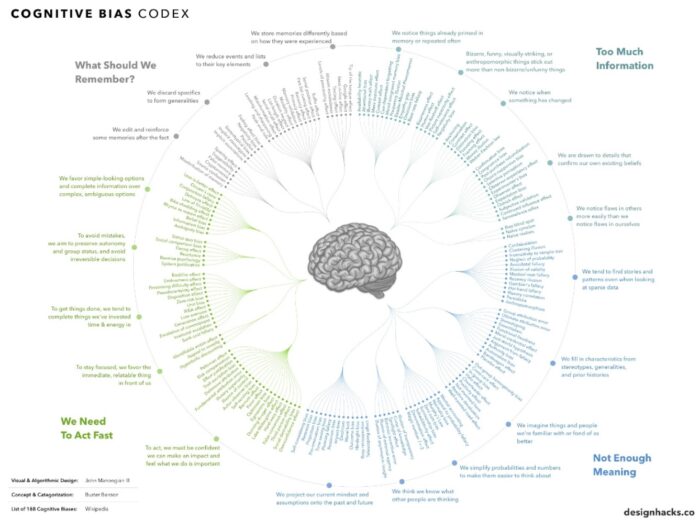 Are you familiar with the “lumper vs splitter” debate? This refers to any situation in which there is some controversy over exactly how to categorize complex phenomena, specifically whether or not to favor the fewest categories based on similarities, or the greatest number of categories based on every difference. For example, in medicine we need to divide the world of diseases into specific entities. Some diseases are very specific, but many are highly variable. For the variable diseases do we lump every type into a single disease category, or do we split them into different disease types? Lumping is clean but can gloss-over important details. Splitting endeavors to capture all detail, but can create a categorical mess.
Are you familiar with the “lumper vs splitter” debate? This refers to any situation in which there is some controversy over exactly how to categorize complex phenomena, specifically whether or not to favor the fewest categories based on similarities, or the greatest number of categories based on every difference. For example, in medicine we need to divide the world of diseases into specific entities. Some diseases are very specific, but many are highly variable. For the variable diseases do we lump every type into a single disease category, or do we split them into different disease types? Lumping is clean but can gloss-over important details. Splitting endeavors to capture all detail, but can create a categorical mess.
As is often the case, an optimal approach likely combines both strategies, trying to leverage the advantages of each. Therefore we often have disease headers with subtypes below to capture more detail. But even there the debate does not end – how far do we go splitting out subtypes of subtypes?
The debate also happens when we try to categorize ideas, not just things. Logical fallacies are a great example. You may hear of very specific logical fallacies, such as the “argument ad Hitlerum”, which is an attempt to refute an argument by tying it somehow to something Hitler did, said, or believed. But really this is just a specific instance of a “poisoning the well” logical fallacy. Does it really deserve its own name? But it’s so common it may be worth pointing out as a specific case. In my opinion, whatever system is most useful is the one we should use, and in many cases that’s the one that facilitates understanding. Knowing how different logical fallacies are related helps us truly understand them, rather than just memorize them.
A recent paper enters the “lumper vs splitter” fray with respect to cognitive biases. They do not frame their proposal in these terms, but it’s the same idea. The paper is – Toward Parsimony in Bias Research: A Proposed Common Framework of Belief-Consistent Information Processing for a Set of Biases. The idea of parsimony is to use to be economical or frugal, which often is used to apply to money but also applies to ideas and labels. They are saying that we should attempt to lump different specific cognitive biases into categories that represent underlying unifying cognitive processes.
Continue Reading »
Mar
20
2023
 Did UFO reporting increase during the pandemic? A group of researchers set out to answer that question, and recently published their results. Their hypothesis was two-fold, including the notion that people had more free time during the shutdown and perhaps spent more time out doors, and therefore had a greater opportunity to see anomalous things in the sky. I would add that more free time might also mean a greater chance of bothering to report what they saw to one of the national UFO networks. The second hypothesis is that the pandemic was associated with an increase in anxiety, and anxiety makes people more alert and attentive. People might therefore be checking out their environment more and noticing anomalies that would otherwise have escaped their attention.
Did UFO reporting increase during the pandemic? A group of researchers set out to answer that question, and recently published their results. Their hypothesis was two-fold, including the notion that people had more free time during the shutdown and perhaps spent more time out doors, and therefore had a greater opportunity to see anomalous things in the sky. I would add that more free time might also mean a greater chance of bothering to report what they saw to one of the national UFO networks. The second hypothesis is that the pandemic was associated with an increase in anxiety, and anxiety makes people more alert and attentive. People might therefore be checking out their environment more and noticing anomalies that would otherwise have escaped their attention.
It’s interesting that their hypothesis (the pandemic lead to more UFO reporting) is agnostic toward the question of what UFOs (using the traditional term, as the study does) actually are. It treats them as just unknown anomalies. Whether or not UFOs generally represent terrestrial phenomena or alien phenomena, sightings might increase for the above reasons. To answer that question we need other information.
In 2000 I proposed the term the psychocultural hypothesis to explain what UFO sightings and related phenomena represent. The PCH posits that the UFO phenomenon is caused entirely by cultural and psychological factors and not by anything alien or even truly anomalous (meaning that it represents an entirely unknown phenomenon – no psychic bigfeet from the future or Atlantean ghosts). There is the background of mundane activity, including weather, astronomical, and human technological phenomena. This is the background noise, which people often misperceive and then overlay a cultural belief system. People never see spaceships – they see blobs, lights, indistinct images, or something at the edge of perception, and then they fit that experience into their pre-existing cultural beliefs.
They may say explicitly that they think it is aliens, or they may do the, “I’m not saying it’s aliens, but it’s aliens” thing. In other words, they may not specifically claim that what they experienced or the evidence being presented is definitely alien, they will just say that it is “anomalous” or “unidentified” or somehow mysterious. They will then often go from unexplained to unexplainable. The psychological game is to just leave it at that, but what they are really doing is creating the space in which aliens might exist. At the end of the day, it’s all about the aliens.
Continue Reading »
Mar
17
2023
 The nuclear debate seems never-ending, which I guess is to be expected. Every large technology has tradeoffs. But the need to transition our energy infrastructure to carbon neutral has shifted the equation, and it is now arguable that we cannot afford to ignore the option of nuclear energy. The UK seems to agree with this take – they currently generate about 15.5% of their energy through nuclear reactors and are planning on expanding this to 25% by 2050.
The nuclear debate seems never-ending, which I guess is to be expected. Every large technology has tradeoffs. But the need to transition our energy infrastructure to carbon neutral has shifted the equation, and it is now arguable that we cannot afford to ignore the option of nuclear energy. The UK seems to agree with this take – they currently generate about 15.5% of their energy through nuclear reactors and are planning on expanding this to 25% by 2050.
The UK has not built a nuclear power plant in over 20 years, which means their current plants are all near the end of their lifespan. This can be extended to buy enough time to replace them with newer plants, but they need to be building those now, which they are. They plan to approve 8 new plants by 2030, and have them all online by 2050. These are all large nuclear power plants. But they also plan on building small modular reactors (SMRs), which can be built faster and cheaper. Rolls-Royce, for example, has a design for an SMR and they anticipate that they will get regulatory approval for the design by the UK by 2024. If they do there are preliminary plans to build 10 such reactors, with the first coming online in 2029. (I don’t know if these 10 reactors are included in the 25% by 2050 estimate of it they will be incremental.)
In my opinion, this is all good news. As I have discussed before, if we realistically want to reach our collective goal of a carbon-neutral energy infrastructure around 2050 we will need to develop every option. Putting all our eggs in any one basket is likely not a good idea. Having 20-25% nuclear as baseload, another 20% hydroelectric and geothermal for on-demand energy, perhaps some hydrogen (if there really are reserves we can tap into), and the rest wind and solar with some grid storage (perhaps closed loop hydro with some battery storage) is a reasonable first-approximation of what our energy infrastructure can look like. This will vary geographically, but this may be close to an average mix.
We can argue and nitpick about the exact percentages, but honestly that does not really matter. For now, we need to develop all of these options as quickly as possible. We need to map the best path to carbon neutral, that reduces emissions as quickly as possible. That means getting rid of coal first, which is the dirtiest energy. If, in the short term, we need to burn some natural gas, that is Ok as long as it is replacing coal. But all fossil fuels need to be gone by about 2050. Building a core of nuclear power will help us get there. Capturing some carbon would be nice, but I see that as the icing on the cake. Perhaps the best way to do that for now (just to buy us some time for the switchover) is to plant lots of trees and stop deforestation.
Continue Reading »
Mar
16
2023
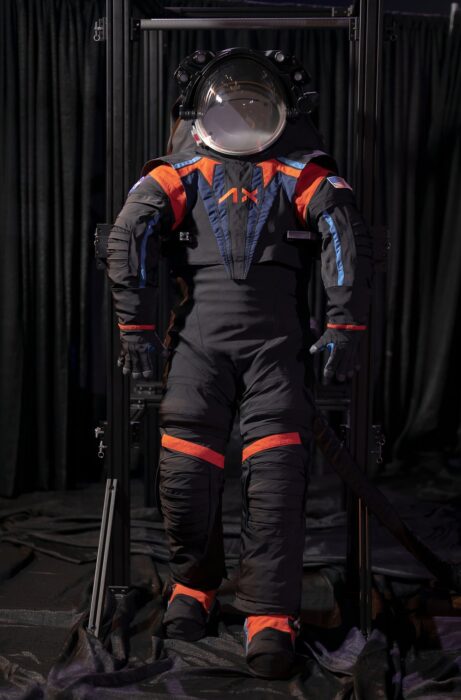 Good spacesuits are deceptively difficult to design, even with today’s technology. NASA is planning to return to the moon in 2025 (if all goes well) but the spacesuit the astronauts will wear is one piece to the puzzle they have not completed yet (the other being the lunar lander). In fact, NASA spent $420 million on spacesuit development but was unhappy with the results. They therefore contracted out the design to private industry. Axiom space won a $228 million contract and just unveiled their first prototype.
Good spacesuits are deceptively difficult to design, even with today’s technology. NASA is planning to return to the moon in 2025 (if all goes well) but the spacesuit the astronauts will wear is one piece to the puzzle they have not completed yet (the other being the lunar lander). In fact, NASA spent $420 million on spacesuit development but was unhappy with the results. They therefore contracted out the design to private industry. Axiom space won a $228 million contract and just unveiled their first prototype.
It might seem that we are reinventing the wheel, as NASA already developed spacesuits for moon landings – 50 years ago. Couldn’t they just tweak or update those designs? What about the spacesuits they have been using on the ISS?
The Apollo spacesuits, while iconic, were limited. One of the big challenges is creating a suit that can maintain internal pressure without overly limiting movement. A pressurized suit is extremely limiting. The suit obviously has to be tough enough to maintain pressure, without leaking any air. It also has to maintain temperature, through extremes. On the moon, without an atmosphere, the temperature varies from 120 C to -130 C. The moon is also a harsh environment. The regolith is like microscopic glass shards, and was brutal to the Apollo suits. Getting into mechanical joints could freeze them, and the abrasive action can degrade suits. For these reasons the Apollo suits were only rated for 115 hours of pressurized use. They were one-offs, built custom for each astronaut and intended for only a single use.
Continue Reading »
Mar
14
2023
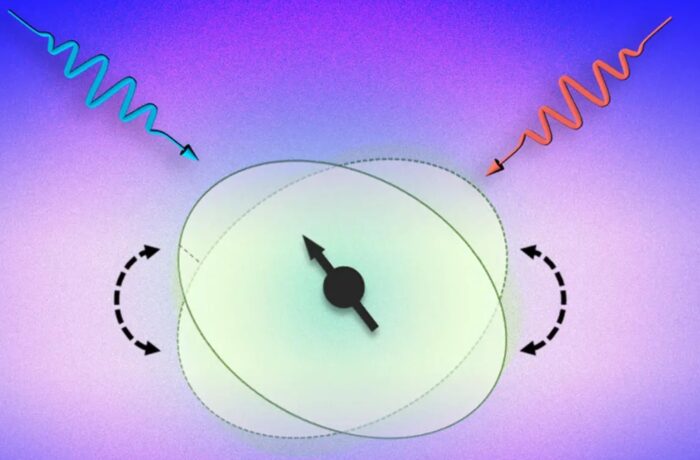 There has been a lot of quantum computer news since I last wrote about the topic. But this is still a technology that is slowly advancing in the background, while actual applications have been limited. There is a threshold effect at play – at some point, quantum computers will be powerful and practical enough that there will likely be a rapid adoption at the scientific, governmental, and industrial level (these are not for personal use, at least not anytime soon).
There has been a lot of quantum computer news since I last wrote about the topic. But this is still a technology that is slowly advancing in the background, while actual applications have been limited. There is a threshold effect at play – at some point, quantum computers will be powerful and practical enough that there will likely be a rapid adoption at the scientific, governmental, and industrial level (these are not for personal use, at least not anytime soon).
Quantum computers, as the name implies, exploit properties of quantum mechanics, rather than classical physics as do traditional computers. Digital computers, like the one you are using now to read this blog, are largely based on the bit – a bit is the smallest piece of information, either a 1 or a 0, in the binary language of computers. Computer technologies require some physical property that is very small and that can quickly and accurately be changed between two states, with these two states representing a 1 or 0. This can be done in various ways, but mostly exploiting electromagnetism.
Quantum computers do not use bits, they use qubits. A qubit exploits a quantum property (superposition) that can be in any state between 1 and 0, inclusive. Each qubit, therefore, has the potential to store orders of magnitude more information than one bit. Qubits are then entangles with each other and this entanglement produces constructive and destructive interference which can magnify the probable correct answer (gross oversimplification, but follow the links in my previous article for more details if you are interested). A working quantum computer requires a physical property at the quantum level that can be in superposition and entangled, and connected to every other qubit. There are still major hurdles to overcome, one being error correction.
Continue Reading »
 One of the challenges of paleontology is that we are trying to infer and entire animal just from the hard parts that fossilize, mostly bones and teeth (and sometimes just teeth). But if we look at animals today there are a lot of details we could not guess from their bones alone – the mane of a lion, the humps on camels, or the amazing display of peacocks. Soft tissue is rarely preserved, so in many cases we simply have to guess. If we look at the classic depictions of dinosaurs, we see creatures that are all drab in color and don’t have any significant soft-tissue adaptations. We are getting better and inferring color from fossilized melanosomes. We are also discovering that many dinosaurs had feathers, and those feathers were probably colorful. In fact, that clade (just think of birds) have lots of integumentary adaptations, not just feathers. Turkeys are a good example. It’s just as likely, therefore, that dinosaurs had lots of interesting integumentary structures hanging off of them.
One of the challenges of paleontology is that we are trying to infer and entire animal just from the hard parts that fossilize, mostly bones and teeth (and sometimes just teeth). But if we look at animals today there are a lot of details we could not guess from their bones alone – the mane of a lion, the humps on camels, or the amazing display of peacocks. Soft tissue is rarely preserved, so in many cases we simply have to guess. If we look at the classic depictions of dinosaurs, we see creatures that are all drab in color and don’t have any significant soft-tissue adaptations. We are getting better and inferring color from fossilized melanosomes. We are also discovering that many dinosaurs had feathers, and those feathers were probably colorful. In fact, that clade (just think of birds) have lots of integumentary adaptations, not just feathers. Turkeys are a good example. It’s just as likely, therefore, that dinosaurs had lots of interesting integumentary structures hanging off of them.
 It is an unfortunate reality that with over 8 billion people on the planet almost anything we collectively do has the potential to have huge environmental impacts. When the human population was in the mere millions we could treat the planet as an essentially unlimited resource. But we simply don’t have that luxury anymore.
It is an unfortunate reality that with over 8 billion people on the planet almost anything we collectively do has the potential to have huge environmental impacts. When the human population was in the mere millions we could treat the planet as an essentially unlimited resource. But we simply don’t have that luxury anymore.  The first
The first  This has been somewhat of a quiet revolution, but a new law in England may bring it to the foreground.
This has been somewhat of a quiet revolution, but a new law in England may bring it to the foreground.  This is one of those technology news stories where the implications of the technology is greater than the thing itself. Relativity Space, a rocket company based in California,
This is one of those technology news stories where the implications of the technology is greater than the thing itself. Relativity Space, a rocket company based in California,  Are you familiar with the “lumper vs splitter” debate? This refers to any situation in which there is some controversy over exactly how to categorize complex phenomena, specifically whether or not to favor the fewest categories based on similarities, or the greatest number of categories based on every difference. For example, in medicine we need to divide the world of diseases into specific entities. Some diseases are very specific, but many are highly variable. For the variable diseases do we lump every type into a single disease category, or do we split them into different disease types? Lumping is clean but can gloss-over important details. Splitting endeavors to capture all detail, but can create a categorical mess.
Are you familiar with the “lumper vs splitter” debate? This refers to any situation in which there is some controversy over exactly how to categorize complex phenomena, specifically whether or not to favor the fewest categories based on similarities, or the greatest number of categories based on every difference. For example, in medicine we need to divide the world of diseases into specific entities. Some diseases are very specific, but many are highly variable. For the variable diseases do we lump every type into a single disease category, or do we split them into different disease types? Lumping is clean but can gloss-over important details. Splitting endeavors to capture all detail, but can create a categorical mess. Did UFO reporting increase during the pandemic? A group of researchers set out to answer that question,
Did UFO reporting increase during the pandemic? A group of researchers set out to answer that question,  The nuclear debate seems never-ending, which I guess is to be expected. Every large technology has tradeoffs. But the need to transition our energy infrastructure to carbon neutral has shifted the equation, and it is now arguable that we cannot afford to ignore the option of nuclear energy. The UK seems to agree with this take – they currently generate about 15.5% of their energy through nuclear reactors and are
The nuclear debate seems never-ending, which I guess is to be expected. Every large technology has tradeoffs. But the need to transition our energy infrastructure to carbon neutral has shifted the equation, and it is now arguable that we cannot afford to ignore the option of nuclear energy. The UK seems to agree with this take – they currently generate about 15.5% of their energy through nuclear reactors and are  Good spacesuits are deceptively difficult to design, even with today’s technology. NASA is planning to return to the moon in 2025 (if all goes well) but the spacesuit the astronauts will wear is one piece to the puzzle they have not completed yet (the other being the lunar lander). In fact, NASA spent $420 million on spacesuit development but was unhappy with the results. They therefore contracted out the design to private industry. Axiom space won a $228 million contract and
Good spacesuits are deceptively difficult to design, even with today’s technology. NASA is planning to return to the moon in 2025 (if all goes well) but the spacesuit the astronauts will wear is one piece to the puzzle they have not completed yet (the other being the lunar lander). In fact, NASA spent $420 million on spacesuit development but was unhappy with the results. They therefore contracted out the design to private industry. Axiom space won a $228 million contract and  There has been a lot of quantum computer news
There has been a lot of quantum computer news 




